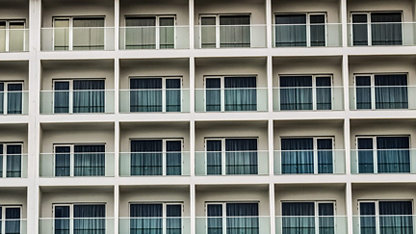- 15.6 million owner-occupier homes in English, representing 64% of the overall market, with 35% of homes owned outright and an average age of 57.
- 4.6 million households in the private rented sector (PRS), representing 19% of the overall market, with an average age of 41.
- 4 million households in the socially rented sector, representing 17% of the market and an average age of 53. 1.6 million of these homes are rented through a local authority, with 2.4 million rented through a housing association.
- One in six households in England are in a leasehold, with 2.3 million owner occupiers and 1.5 million PRS tenants. London has almost double the average number of leasehold properties to the rest of England with 28% and 15% respectively.
The results of the latest English Housing Survey demonstrate why it is important that we continue to drive up standards and quality, while also addressing affordability and the essential requirement to create low-carbon, energy-efficient homes.
The annual English Housing Survey explores a range of metrics to evaluate the condition of the sector, and this year surveyed almost 10,000 households on a range of matters including housing satisfaction, energy efficiency and affordability.
“It is good to see improvements in the energy efficiency of homes, however, some of those most vulnerable continue to live in more energy-inefficient housing, impacting physical and economic wellbeing.”

Sam Rees
Senior Public Affairs Officer, RICS
Five Key Takeaways
- Quality and satisfaction in our homes remain divided. Owner-occupiers, who have the most control over the quality of their home, are the most satisfied, whereas social renters, who have the least control, are the most dissatisfied. Those from lower socio-economic and ethnically diverse backgrounds are also the least likely to raise a complaint to a landlord or housing manager.
- 50% of renters have been in their current home less than three years, with 28% of private renters expecting to buy a home in the next 24 months – a 7% decrease from the previous year.
- First-time buyers typically paid £13,000 more in a deposit than existing homeowners.
- Elderly people were the most likely to live in an energy-inefficient home, with the average homeowner needing to spend £7,872 to make their home EPC C.
- Rents and mortgage payments continue to increase year on year, although most said the costs remained manageable – although the data was collated before autumn 2022 when interest rates increased.
Responding to the publication of the survey, Sam Rees, RICS Senior Public Affairs Officer commented:
“The findings highlight the importance of supply, standards, and sustainability across housing.
“It is striking that one in three renters reported problems with dampness or a lack of quality in their home. RICS has called for greater landlord support and guidance to ensure tenants can live in a high-quality, safe home, and we are engaging with the government on their renter’s reform proposals to deliver just that.
“A decline in prospective first time-buyers are not unexpected given the economic pressures facing the UK, but the fact a deposit on a first home is typically 43% higher than an existing owner-occupier moving demonstrates the importance of improving housing supply – something RICS have consistently been calling for.
“It is good to see improvements in the energy efficiency of homes, however, some of those most vulnerable continue to live in more energy-inefficient housing, impacting physical and economic wellbeing.
“Recent research by RICS and YouGov shows homeowners are keen to make investments in their home, but professional advice and standards will be essential to achieving this at scale – part of the reason we are developing the RICS Retrofit Standard.”
- 94% of owner-occupier households are satisfied with their home.
- 81% of PRS households are satisfied with their home.
- 77% of social renters are satisfied with their home.
Obvious regional satisfaction differences were also apparent, with 91% of PRS households satisfied with their home in North East England, compared with 75% in Yorkshire and The Humber. In social housing, the South East is the most satisfied with their homes, with 85%, compared with 70% in London.
Renters also reported high levels of quality concerns, including:
- 33% living in non-decent homes
- 35% had problems with damp
- 14% of PRS homes contain a Category 1 hazard, compared with 4% in social housing and 10% in owner-occupied homes.
1.2 million social renters considered raising complaints about the quality and standards in their homes, with 85% raising an official complaint, with 726,000 in the PRS wanting to raise concerns with landlords, but only 75% ending up doing so. The findings also reported that those in poorer quality rentals were more likely to be from ethnically diverse communities and less likely to raise complaints to landlords.
With the Renters Reform Bill proposing the expansion of the Decent Homes Standard to the PRS, there are major geographic differences in those properties failing to meet the current standard.
- 37.7% of PRS homes in Yorkshire & The Humber would fail to meet the Decent Homes Standard, compared with 16.2% in the South East and 14.4% in London.
- 50% of private renters have been in their current homes for less than three years. This compares with 17% of social renters and 14% of owner-occupiers for the same period.
- For those who moved within the last three years, 51% of owner-occupiers moved within a five-mile radius of their previous home. This compares with 45% in the PRS and 70% in social housing.
- 20% of younger households (aged 16-55) in the PRS plan to move in the next six months, compared to 5% of owner-occupiers.
- The average time spent in a single home varied between tenures. The average PRS tenant was in a property for 4.4 years, compared to 12.7 years in social housing and 17.6 years for owner-occupiers.
- 77% of private renters ended their tenancy as they wanted to move, with 4% ending due to being asked to leave (including Section 21) and 10% ending by mutual agreement.
Asked why owner-occupiers had moved homes, there was an obvious age difference in reasons. For households aged 16-55:
- 37% moved to buy their first home, 32% moved to upsize, and 21% moved to a better area.
When asked the same questions, older households reporting moving before:
- 30% for family or personal reasons, 20% to downsize, and 20% to move to a better area
- 28% of private renters expected to be able to purchase a home within 24 months – down from 35% in the previous year.
- First-time buyers typically put down larger deposits, with an average of £43,693, compared to existing mortgage customers moving who put in average deposits of £30,000.
- 22% of first time-buyer mortgages had a 0-9% deposit and 46% between 10-19%. 5% of first-time buyers bought outright.
- 85% of first-time buyers purchased their homes with savings, with 27% having support from friends or family and a further 8% using inheritance as a source of deposit.
- 56% of first-time buyers had a 30-year mortgage repayment plan, compared to 38% who had a 20–29-year plan and 6% who had a 1–19-year plan.
- 49% of leaseholders are first-time buyers.
- 2022 saw average mortgage repayments of £154 a week – with the London average being £277.
- Average mortgage repayments increased year-on-year from £145-£154 a week, although the weekly increase in London was £65, from £212 to £277.
- The average social rent in 2022 was £97 a week, and for private renters was £173. In London, social rents averaged £141 a week and in the PRS £353.
- Mortgage customers typically spent 22% of their annual income on payments – a year-on-year increase of 4%. In the rental sector, the average income spent on rent was 27% in social housing, and 33% in the PRS – a year-on-year decrease from 35% (excluding additional housing support).
- 93% of mortgage customers reported it being easy to afford their payments – however, it is noticeable this data was collected before the interest rate increase seen in the autumn 2022.
- Those private and social renters with pre-payment energy meters were more likely to be in rent arrears than those on a standard direct debit.
- The average annual service charge was £2,207 in London, compared with £1,384 for the rest of England.
- The average Energy Efficiency Rating continues to improve, with 16% of homes in 2011 an A-C rating, rising to 47% in 2021.
- The average cost of improving a home to meet EPC C was £7,872 for owner-occupiers, £7,430 for PRS landlords and £5,158 for social housing. It is estimated that the cost of improving all homes (where technically feasible) to EER C would be £91 billion.
- The North East had the lowest improvement cost, coming in at £4,973, with the East of England being the highest at £8,482.
- Pre-1919 dwellings were also the most expensive property type to improve to meet EER C, costing an average of £15,000. Dwellings built since 1990 typically cost £1000 to meet the same rating.
- Comparing similar dwellings, an EER C-rated property typically had energy bills £285 lower than an E, F or G-rated property – with a pre-1919 property having the highest annual saving of £428.
- 60% of leasehold properties had an Energy Efficiency Rating of A-C, compared with an average of 47%.
- 2% of owner-occupiers were on a prepayment meter, compared with 39% in a local authority-provided social home.
- Purpose-built high-rise flats were the most energy efficient, with 85% A to C rated. 15% of detached houses were E or G rated.
- London had the highest percentage of A-C-rated properties at 56%. The East Midlands was the lowest, with just 39% meeting the same rating. London was noticeably higher, in part due to the number of high-rise flats.
- Younger people tended to live in more energy-efficient homes, with 61% living in an A-C rated property. Over 75-year-olds had the highest chance of living in an E, F or G-rated property.
- An estimated 179,000 households had a form of heat pump, representing less than 1% of the overall market. 74% of those households were owner-occupied.












